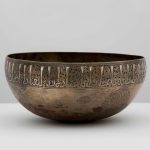Make sure to visit the Islamic Arts Museum in Malaysia!
Make sure to visit the Islamic Arts Museum in Malaysia!
Islamic art and pieces of historical significance doesn’t get nearly as enough credit as it should, but interest in it over the years has vastly increased with the likes of the Topkapi museum in Turkey, the Alexandria museum in Egypt and various others around the Arab world. However, nestled in a district of one of Malaysia’s busiest cities Kuala Lumpur, lies the Islamic Arts Museum. Located near the National Mosque and Lake Gardens, I found this museum easy to reach and definitely a highlight.

Founded in 1998, it features a large exhibit of some of the most impressive pieces of Islamic history, as well as some modern and contemporary works of art. The museum displays an array of lovely preserved items collected from various parts of the Islamic world on three floors, so it’s safe to say that you’ll be transported back in time for a good few hours. I find it impressive that it houses more than 7,000 pieces of breathtaking artefacts and collections of literature. The ground level features Bedouin tapestry, a skill which they were famous for – and looking at the intricate designs of each tent and carpet, you’ll understand why.
The first level and second levels are split into different galleries, each displaying items relating to a particular genre. The first level boasts sections featuring architecture, literature, specifically old Qurans and manuscripts, and items such as pottery, ceramics, clothing, accessories, weapons and décor from India, China and Malaysia. The second level has various sections displaying items from the Arab world and other countries including textiles, jewellery, arms/armour, coins, metal, wood and ceramics.
The architecture shown at the museum is in the form of scaled down miniature models of various mosques, including the holy Kabah in Makkah, the Prophet’s (pbuh) mosque in Madinah, mosques from the far and south-east Asian world, the African continent, the middle eastern countries and even some European structures. Domestic architecture is also featured by a display of original Ottoman living spaces from around 1235 AH.
Perhaps the most captivating gallery is the Quran and manuscript gallery. I was amazed that some of the oldest fragments of the holy book are still kept intact, dated from as far back as the 8th century. The various preserved scripts and calligraphy provide a beautiful visual of how the writing of the Quran evolved in various parts of the world. It displays ornate gold embellished texts as well as minimalist Kufic scripts. Other manuscripts feature the Hadith Bukhari, and those documenting the authentic works of astronomers and other Islamic researchers.

The India gallery features stunning jewels and clothes made from rich silk brocades, and fabrics and household items made from shell, gold, glass, crystal and other rich materials from the Mughal dynasty. The China gallery showcases pieces from the Ming dynasty and later eras, when Islam became widespread in China. Chinese influences on Islamic art is notable and is shown by the unique pottery, ornaments and even Quranic script.
Apart from the remarkable outer building and all its ancient treasures it houses inside, the museum also features a souvenir and curio shop and a restaurant. The Islamic Arts museum is very educational and displays a rich opulence of the ancient Islamic world, a definite must-see for art and history lovers.

By Rafeeah Laher











